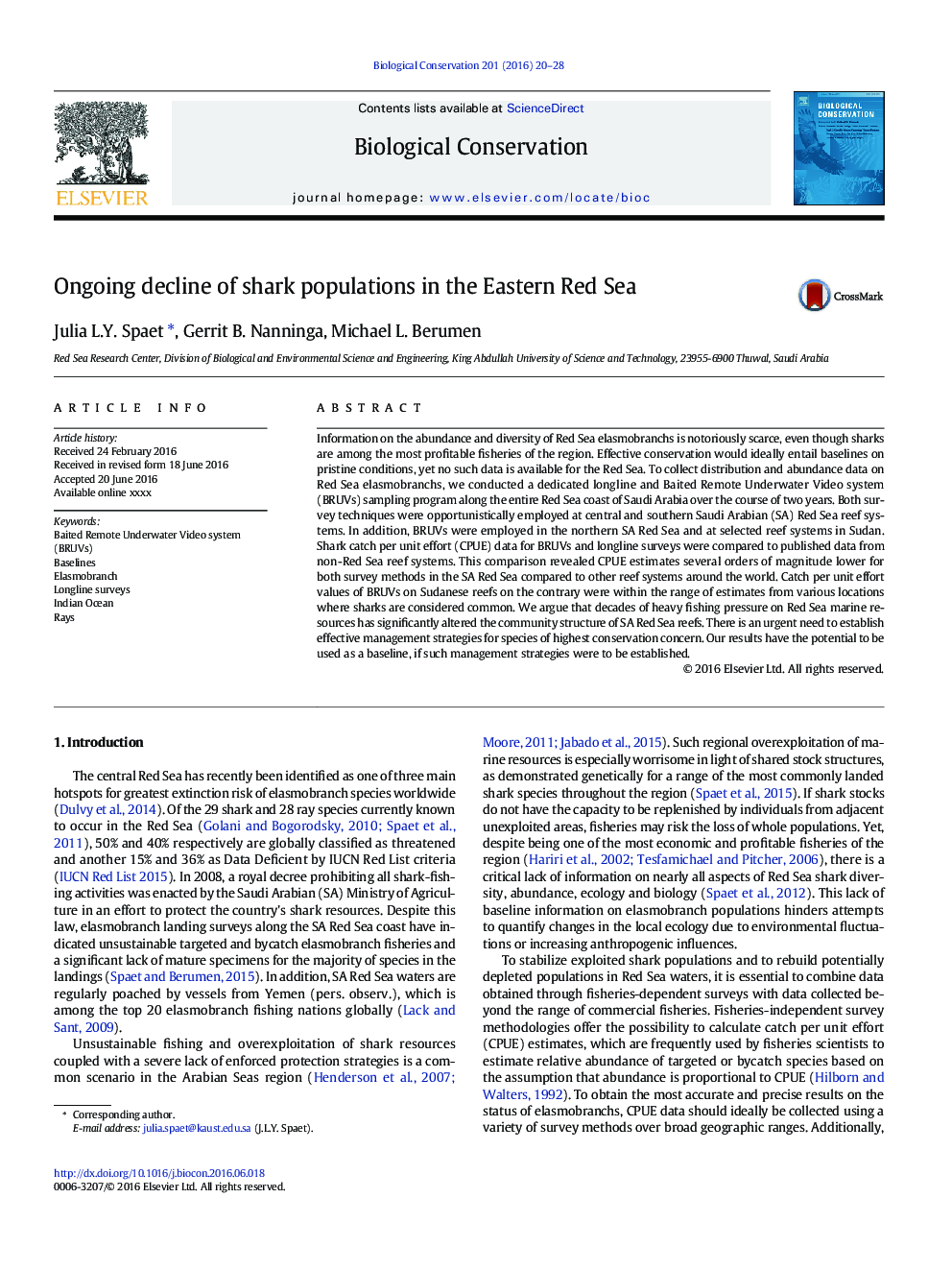| Article ID | Journal | Published Year | Pages | File Type |
|---|---|---|---|---|
| 6298154 | Biological Conservation | 2016 | 9 Pages |
Abstract
Information on the abundance and diversity of Red Sea elasmobranchs is notoriously scarce, even though sharks are among the most profitable fisheries of the region. Effective conservation would ideally entail baselines on pristine conditions, yet no such data is available for the Red Sea. To collect distribution and abundance data on Red Sea elasmobranchs, we conducted a dedicated longline and Baited Remote Underwater Video system (BRUVs) sampling program along the entire Red Sea coast of Saudi Arabia over the course of two years. Both survey techniques were opportunistically employed at central and southern Saudi Arabian (SA) Red Sea reef systems. In addition, BRUVs were employed in the northern SA Red Sea and at selected reef systems in Sudan. Shark catch per unit effort (CPUE) data for BRUVs and longline surveys were compared to published data from non-Red Sea reef systems. This comparison revealed CPUE estimates several orders of magnitude lower for both survey methods in the SA Red Sea compared to other reef systems around the world. Catch per unit effort values of BRUVs on Sudanese reefs on the contrary were within the range of estimates from various locations where sharks are considered common. We argue that decades of heavy fishing pressure on Red Sea marine resources has significantly altered the community structure of SA Red Sea reefs. There is an urgent need to establish effective management strategies for species of highest conservation concern. Our results have the potential to be used as a baseline, if such management strategies were to be established.
Related Topics
Life Sciences
Agricultural and Biological Sciences
Ecology, Evolution, Behavior and Systematics
Authors
Julia L.Y. Spaet, Gerrit B. Nanninga, Michael L. Berumen,
